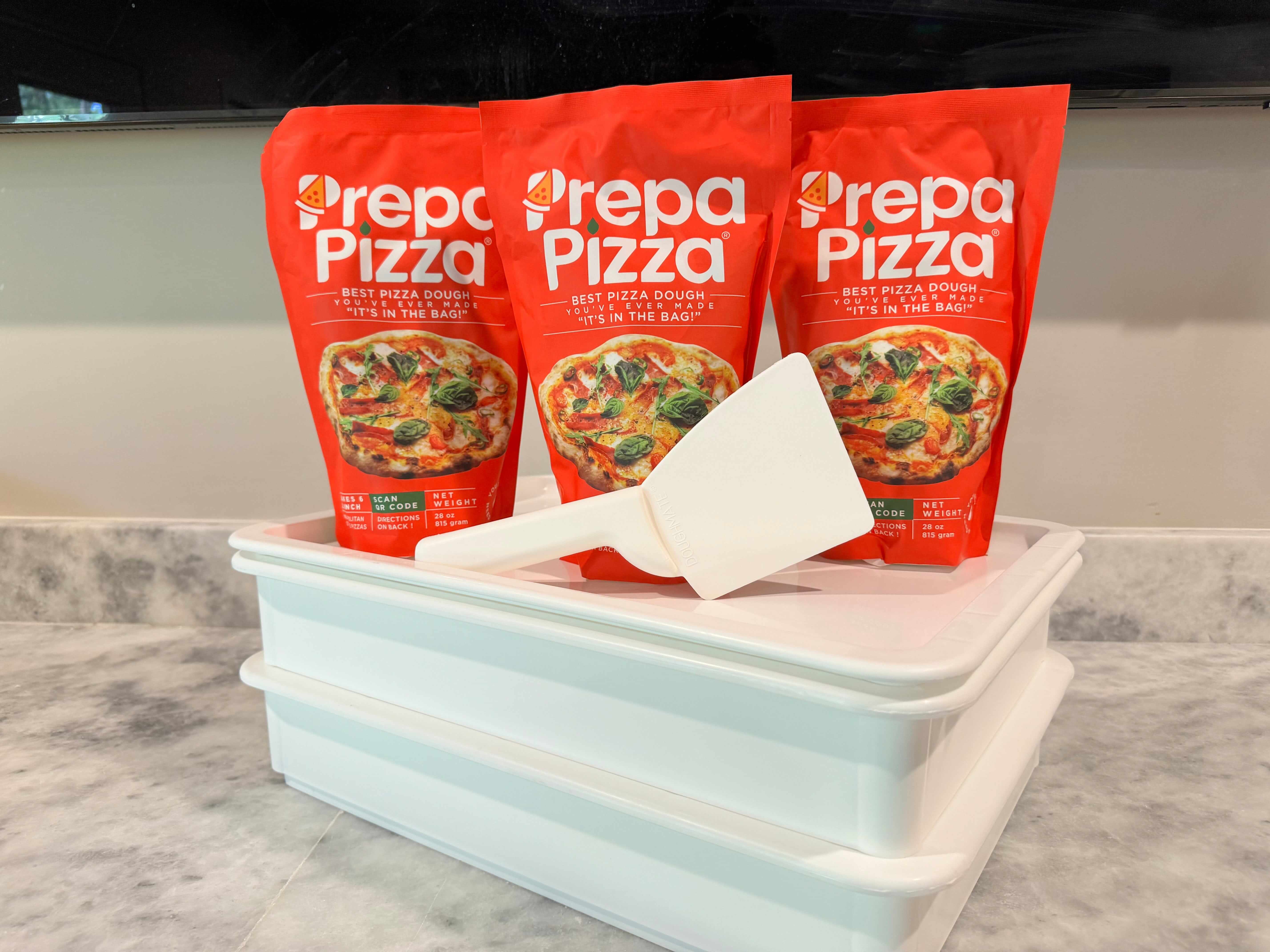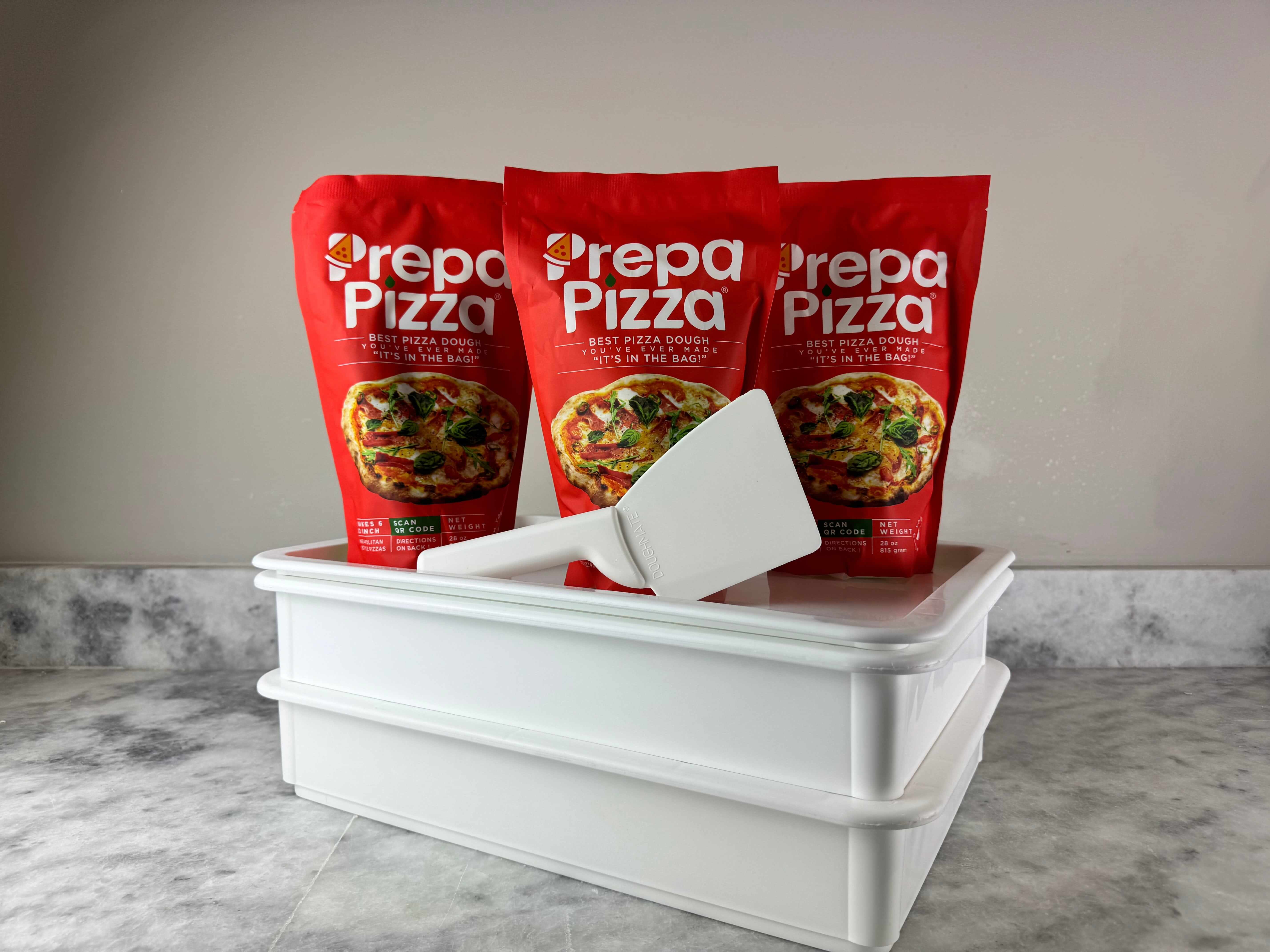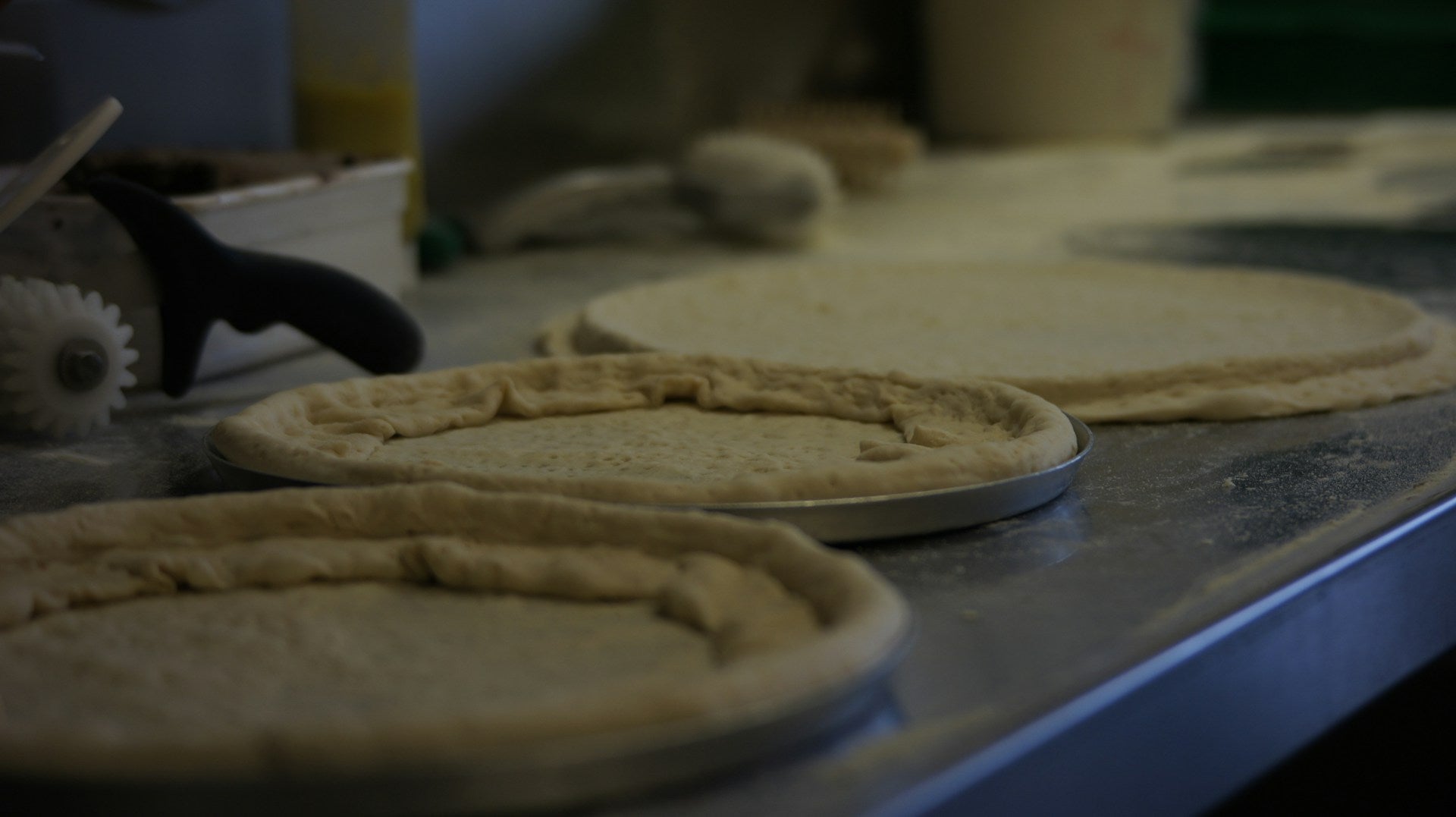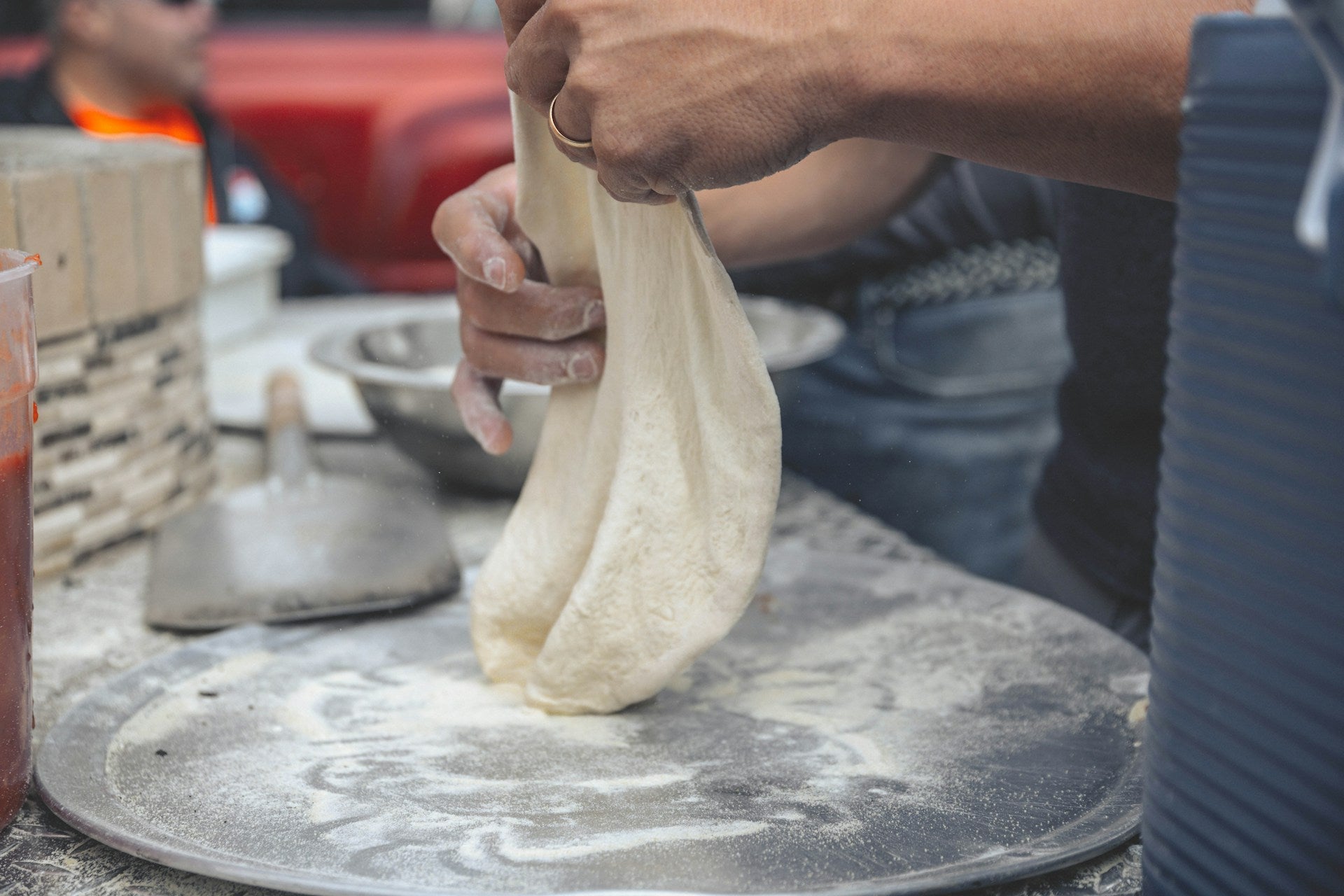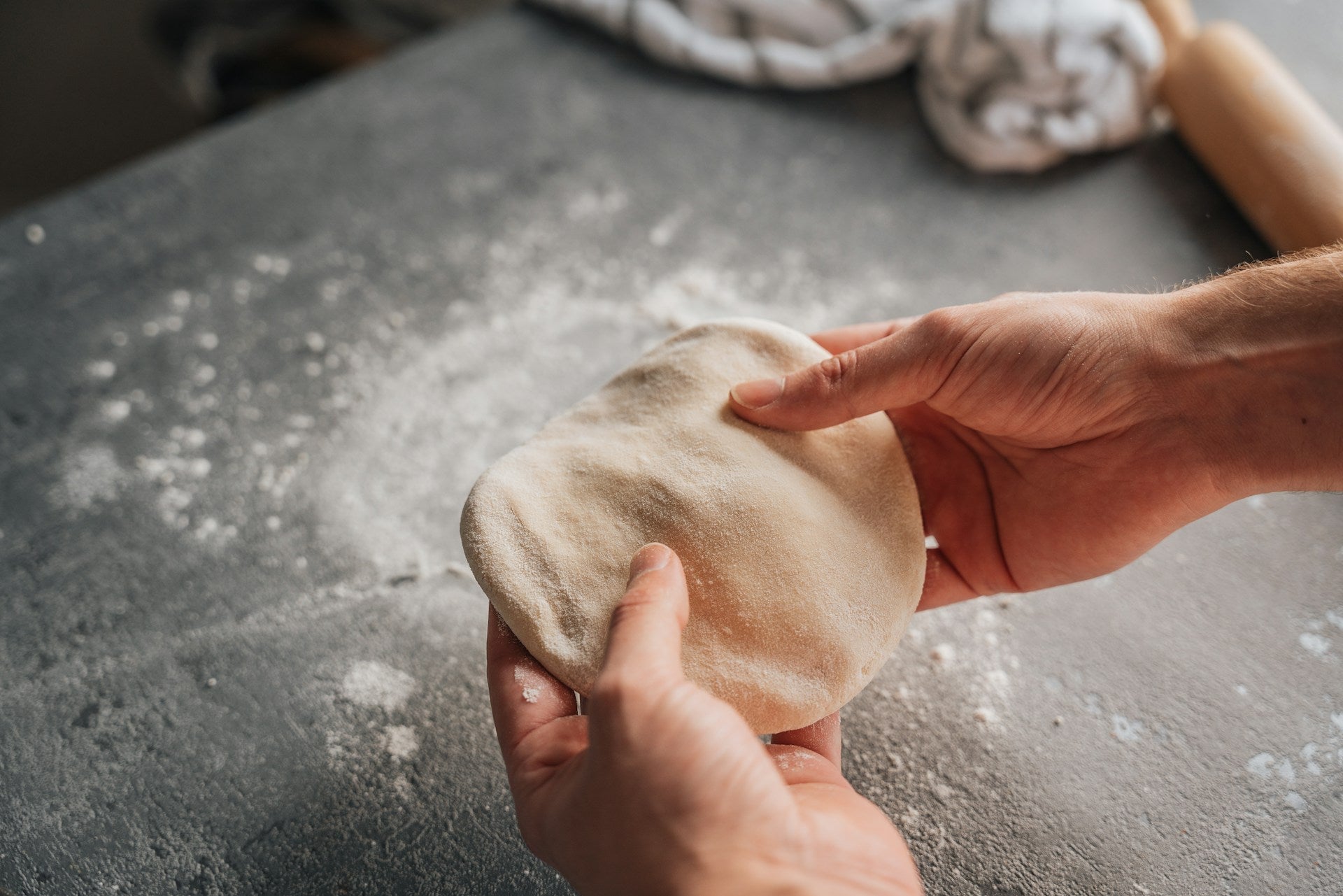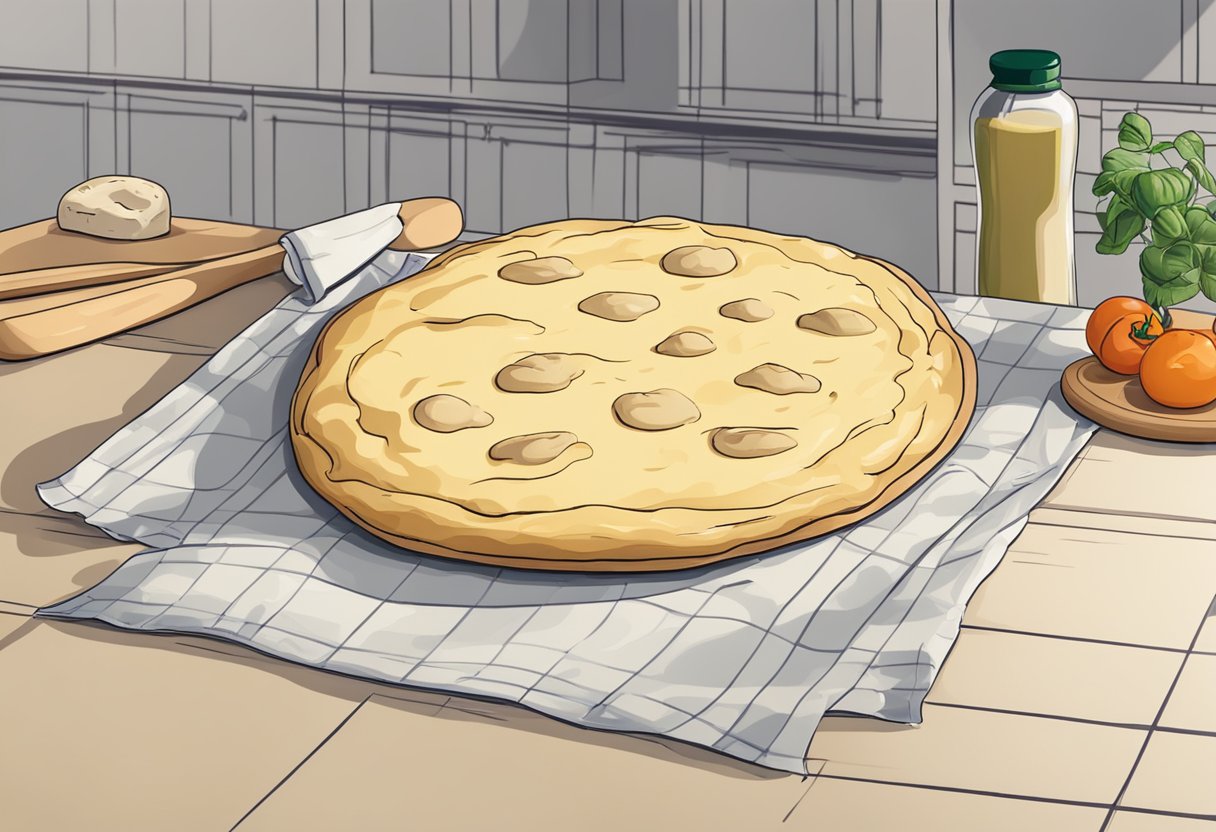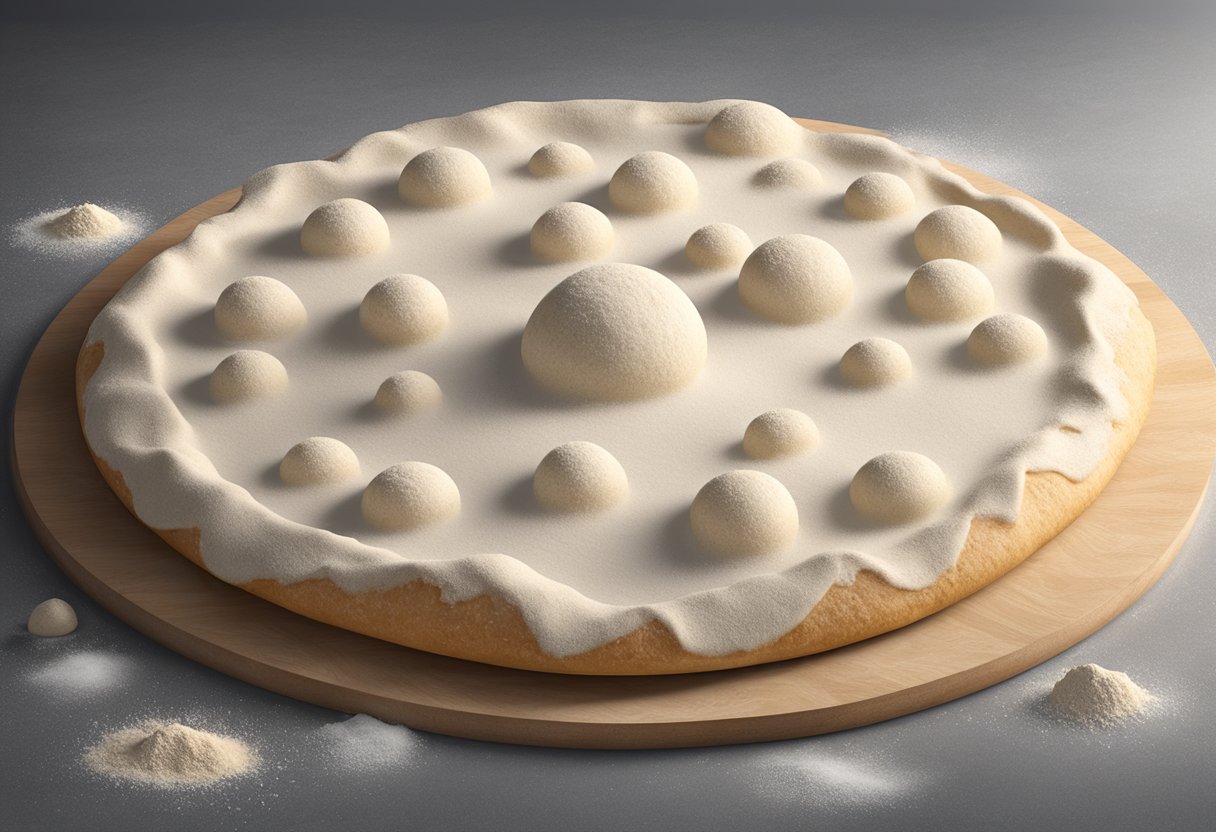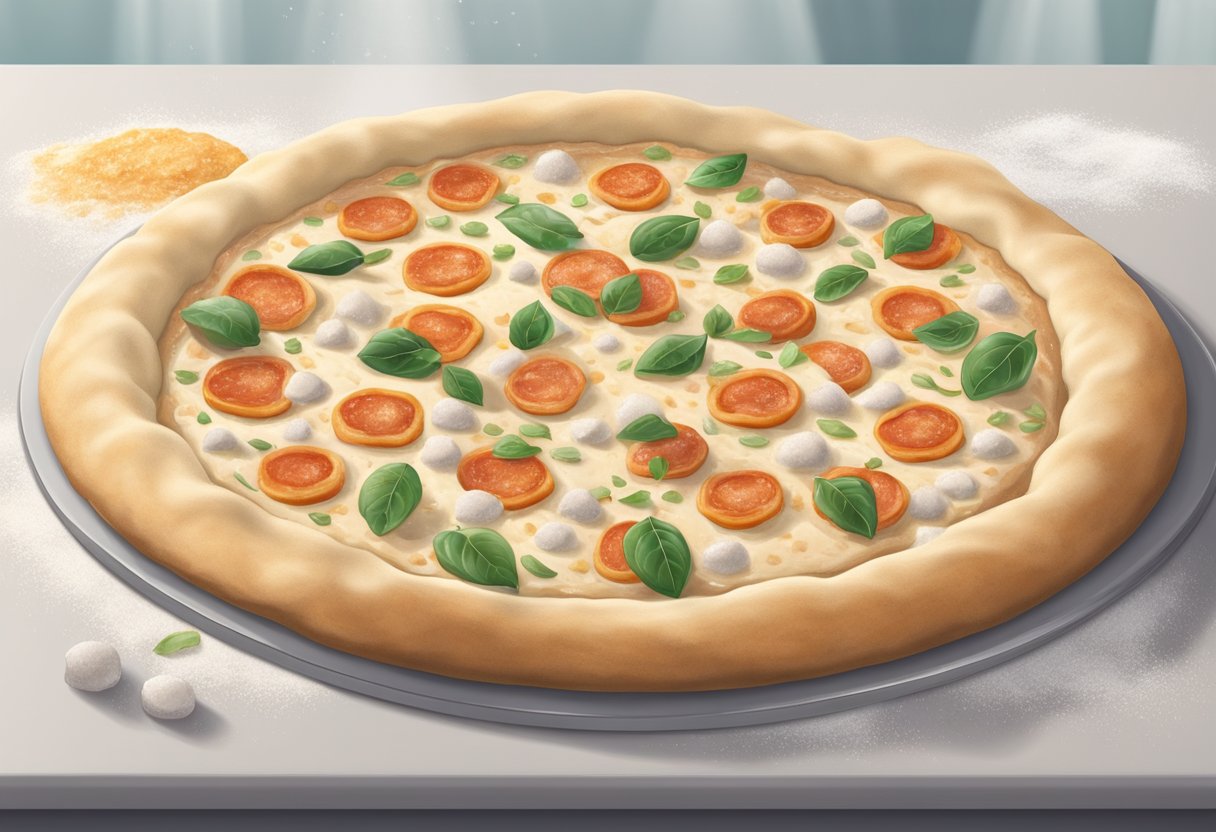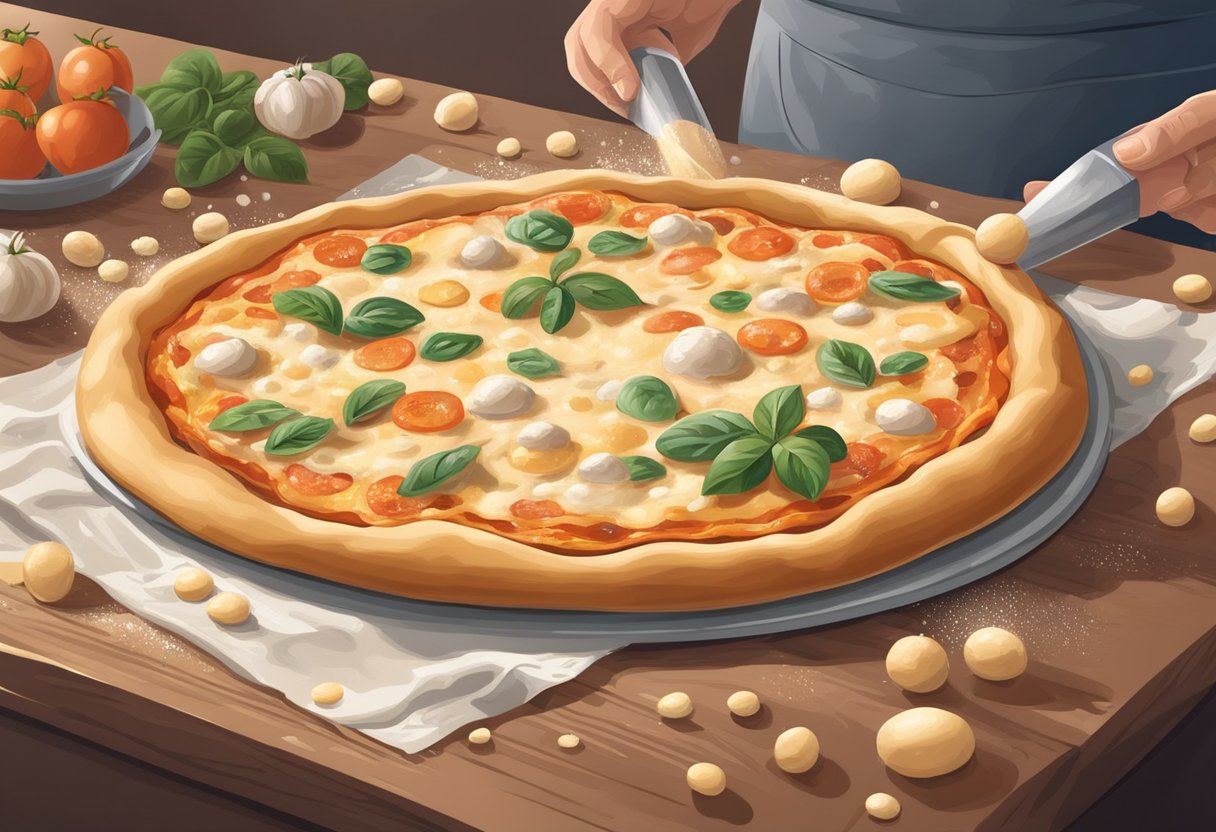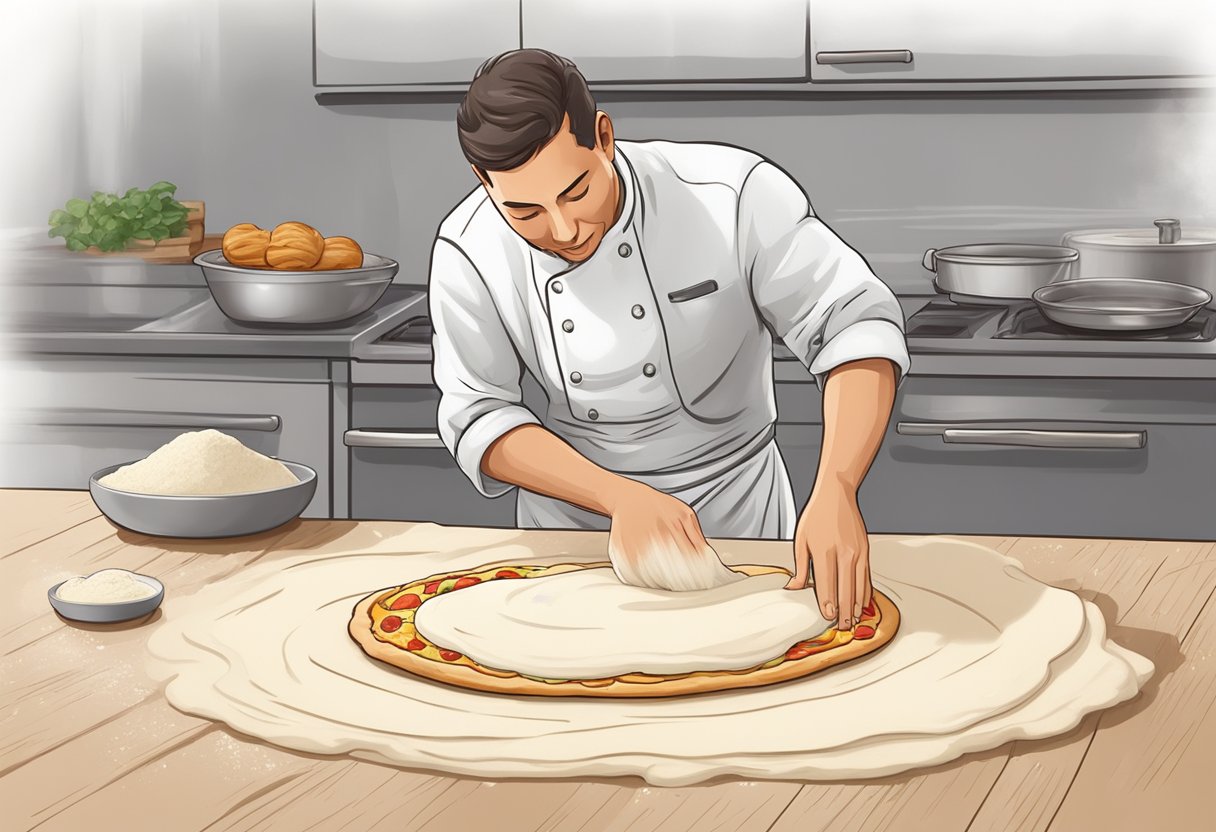
Low Sodium Pizza Dough: A Healthy Twist for Your Favorite Dishes
When it comes to enjoying pizza while maintaining a low sodium diet, you might think that flavor is sacrificed. With the right low sodium pizza dough, you can create a delicious and satisfying pizza experience without the excess salt. The good news is that making or choosing a quality low sodium pizza dough can enhance your meals without compromising on taste or health.
By opting for Prepa Pizza's premium dough, you ensure that you have a fantastic base for your favorite toppings, all while keeping sodium levels in check. Our dough is crafted from high-quality ingredients that meet restaurant standards, allowing you to whip up pizzas that are both nutritious and enjoyable.
Whether you’re entertaining guests or simply treating yourself, low sodium pizza can be both flavorful and guilt-free. Explore the various options available, and discover how easy it is to enjoy a classic favorite while staying health-conscious.
Understanding Low Sodium Pizza
Making informed choices about low sodium pizza involves understanding the significance of sodium reduction and the sodium content in common pizza ingredients. Knowledge about these factors can help you create healthier options without sacrificing flavor.
The Importance of Low Sodium
Consuming too much sodium can lead to various health issues, including high blood pressure and heart disease. A low sodium diet is essential for those who are sensitive to sodium or have certain health conditions.
With pizza being a popular choice, opting for a low sodium version allows you to enjoy your favorite dish without the excessive salt. You can achieve this by using low sodium dough, which you can find through providers like Prepa Pizza.
By controlling your sodium intake, you enhance your overall wellness and can still savor a delicious meal. A no-salt pizza dough can serve as the perfect base for your culinary creativity.
Sodium Content in Common Pizza Ingredients
Understanding sodium levels in pizza ingredients helps you make better choices. Here is a breakdown of typical components:
| Ingredient | Sodium Content (approx.) |
|---|---|
| Pizza Crust | Varies; low sodium options available |
| Cheese | 200-400 mg per ounce |
| Tomato Sauce | 200-500 mg per 1/4 cup |
| Pepperoni | 400-500 mg per ounce |
Cheese often contains high sodium levels, essential for balancing flavors but adjustable through selection. Tomato sauces can also be altered with low sodium varieties, ensuring healthier options.
By being mindful of these elements, you can create a pizza that aligns with your dietary goals while still delivering on taste. Using quality ingredients like those from Prepa Pizza ensures that your low sodium pizzas remain satisfying and flavorful.
Ingredients for Low Sodium Pizza Dough
Creating low sodium pizza dough involves selecting the right ingredients that provide flavor and texture without the excess salt. Focusing on flour choices, suitable substitutes for salt, and the proper use of yeast and sugar can lead to a delicious outcome.
Flour Choices
When making low sodium pizza dough, you have several flour options. All-purpose flour is the most common choice due to its balance of protein and gluten, creating a chewy crust. Alternatively, whole wheat flour adds extra fiber and nutrients but may result in a denser dough.
For best results, feel free to mix both flours. A combination enhances flavor and nutritional value while keeping the texture light. You may also explore specialty flours like spelt flour, which can add unique flavors while still maintaining lower sodium content.
Salt Substitutes
While salt is a traditional ingredient in pizza dough for flavor, you can use substitutes to enhance taste without adding sodium. Garlic powder or onion powder can provide a savory essence. Additionally, using a small amount of honey not only adds a touch of sweetness but also improves browning.
You might consider herbs like oregano or basil for added flavor without sodium. These can elevate the overall taste of your dough. Just be cautious with the quantity, as over-seasoning can lead to overpowering flavors.
Yeast and Sugar Use
For pizza dough, the right yeast is crucial. Instant yeast is highly effective, allowing you to skip proofing and making the process more efficient. Simply mix it directly with the dry ingredients.
Adding a small amount of sugar (about 1 teaspoon) helps activate the yeast, contributing to a better rise and browning. Keep in mind that sugar can help balance the flavors in low sodium recipes.
Don’t forget to include a tablespoon of olive oil to enrich the dough's texture and add flavor. This will keep your crust from becoming too dry, ensuring it remains chewy and enjoyable.
Making the Pizza Dough
Creating a low sodium pizza dough involves precise techniques that enhance the flavor and texture while ensuring a healthier option. You will focus on mixing the ingredients correctly, allowing the dough to rise properly, and preparing it for your favorite toppings.
The Mixing Process
Start by combining your dry ingredients in a bowl. Use 2 cups of flour and 2 tablespoons of sugar to add a touch of sweetness. Then, activate 2 ¼ teaspoons of yeast in a small bowl with ¼ cup to ½ cup of warm water. Ensure the water is not boiling to avoid killing the yeast.
After the yeast bubbles, mix it into the dry ingredients along with 3 tablespoons of extra-virgin olive oil. Stir until a shaggy dough forms. At this point, you can adjust the flour amount if the dough feels too sticky. Transfer the mixture onto a floured surface and knead it for about 5 to 10 minutes until smooth.
Dough Rising and Texture
Once kneaded, shape your dough into a ball. Place it in a lightly oiled bowl and cover it with a damp cloth. Let it rest in a warm area for about 1 to 2 hours or until it doubles in size. This rising period is crucial for developing the right texture.
During this time, the yeast ferments, producing carbon dioxide, which creates air pockets within the dough. These air pockets lead to a light and airy crust when baked. After it has risen thoroughly, gently punch down the dough to release excess air, preparing it for the next steps.
Shaping and Preparing for Toppings
Once your dough has risen, turn it out onto a floured surface. Use your hands to gently flatten it into a round disc, being careful not to deflate it completely. You can use a rolling pin for more uniform thickness. Aim for a thickness of about ¼ inch, which will provide a sturdy base for toppings.
Transfer the shaped dough onto a parchment-lined baking sheet or pizza stone. It's essential to create a raised edge to hold your sauce and toppings. You can use your fingertips to crimp the edges for an appealing look. With the dough now ready, it’s time to add your sauce, cheese, and any toppings of your choice before baking.
Healthy Topping Options
Selecting the right toppings can enhance your low sodium pizza while still keeping it healthy. Focus on cheese and sauce choices, as well as incorporating a variety of vegetables and protein options.
Cheese and Sauce Selection
For a low sodium pizza, consider using fresh mozzarella. This cheese offers a mild flavor and has less sodium compared to processed varieties. Look for brands that specify low or no sodium content.
Tomato sauce can also be a pivotal choice. Opt for a no-salt-added tomato sauce or make your own using crushed tomatoes, garlic powder, and herbs. Adding a sprinkle of fresh basil can elevate the flavor without adding sodium.
A good balance of cheese and sauce will create a delicious base for your toppings while keeping health in mind.
Vegetable and Protein Choices
Incorporate a variety of vegetables for added nutrients and flavor. Mushrooms add a savory depth to your pizza while being low in sodium. Other great options include bell peppers, spinach, and zucchini, which provide antioxidants and vitamins.
For protein, consider using grilled chicken or turkey, as they are lean options with low sodium levels. Adding extra herbs like oregano and thyme can enhance the overall taste without compromising on health.
By carefully selecting your toppings, you can create a fulfilling and healthy pizza experience with Prepa Pizza’s low sodium dough.
Nutritional Considerations
Understanding the nutritional components of low sodium pizza dough is essential for making informed dietary choices. Low sodium dough can be a key player in healthier eating, particularly when you pair it with nutritious ingredients like salads.
Calories and Macronutrients Breakdown
When you opt for low sodium pizza dough from Prepa Pizza, you're making a choice that balances flavor with health. A standard serving often contains around 100-120 calories. The macronutrient profile typically includes:
- Carbohydrates: Approximately 20-25 grams
- Proteins: Roughly 3-5 grams
- Fats: Generally 2-4 grams, with minimal saturated fat.
This dough is designed to fit into a balanced diet without compromising taste. With low levels of sugar (usually less than 1 gram), it remains a suitable option for those monitoring their sugar intake. Being mindful of these nutrition facts supports your overall health goals.
Benefits of Adding a Salad
Incorporating a salad alongside your low sodium pizza can enhance the nutritional value of your meal. Salads provide vitamins and minerals, making your meal more balanced. The fiber from vegetables can aid digestion and increase satiety, helping you feel full longer.
Choosing a simple salad with a variety of greens, tomatoes, and cucumbers offers additional nutrients without excessive calories. This can round out your pizza experience, typically adding about 50-100 calories depending on the dressing used. Opting for vinaigrettes can minimize added sugars and fats, making this pairing even healthier.
Baking Techniques
Understanding the right techniques for baking low sodium pizza dough can significantly enhance your pizza-making experience. Key aspects include proper oven preparation and the effective use of a pizza stone to achieve that desired crust texture.
Oven Preparation
Before you start baking, it's essential to preheat your oven. Set it to the highest temperature, usually around 475°F to 500°F (245°C to 260°C). This ensures your dough cooks evenly and develops a crispy crust.
While preheating, make sure your baking surface is ready. If using a pizza stone, place it in the oven to heat up. A well-heated pizza stone helps absorb moisture and creates a delightful crust.
Additionally, consider using a pizza peel sprinkled with flour or cornmeal. This prevents sticking and allows for easy transfers of your pizza into the oven. Proper oven ventilation is also important, so ensure the oven door remains closed during cooking to maintain the heat.
Using a Pizza Stone
A pizza stone is a game-changer for baking low sodium pizza dough. It distributes heat evenly and retains high temperatures, contributing to crispier crusts.
To use it effectively, make sure the stone is thoroughly preheated for at least 30 minutes. This preheating process is crucial for achieving the desired texture.
Once ready, assemble your pizza on a floured pizza peel. Slide the pizza onto the hot stone carefully. If you’re using Prepa Pizza dough, you’ll find its quality stands up well to the heat.
Keep an eye on your pizza while baking, typically around 10 to 12 minutes. The crust should be golden brown when ready. Always use caution when handling a hot stone to prevent burns.
Frequently Asked Questions
This section addresses common queries related to low sodium pizza dough. You will find practical tips, ingredient suggestions, and insights on how to maintain flavor while reducing sodium.
How can I make a low sodium pizza dough at home?
To make low sodium pizza dough at home, start with flour, water, yeast, and a bit of oil. Omit the salt and consider adding spices or herbs for extra flavor. Knead the dough until smooth, let it rise, and then stretch it out for your pizza base.
What brands offer ready-made low sodium pizza crust?
While many brands offer variations, you can explore Prepa Pizza for ready-made low sodium pizza crust options. They focus on quality ingredients and create a dough that meets lower sodium requirements while ensuring great taste.
Can pizza dough be made without salt and still taste good?
Yes, pizza dough can be made without salt and still taste good. Adding garlic powder, herbs, or a splash of vinegar can enhance the flavor, compensating for the absence of salt. Experiment with these additions until you find a combination that works for you.
What are some alternatives to traditional pizza sauce that are low in sodium?
Consider using fresh tomato puree, blended roasted red peppers, or homemade pesto as low sodium alternatives to traditional pizza sauce. These options not only add flavor but can also complement the overall profile of your pizza.
How does reducing salt affect the texture of pizza dough?
Reducing salt can impact the dough's structure and fermentation process. Salt plays a role in controlling yeast activity and strengthening gluten, so a lower sodium dough may require careful kneading and monitoring of rise times to achieve the desired texture.
Are there cheeses that complement a low sodium pizza without adding too much sodium?
Yes, certain cheeses like fresh mozzarella, ricotta, or goat cheese can be lower in sodium compared to aged cheeses. These varieties can enhance flavor without significantly increasing the sodium content of your pizza.




